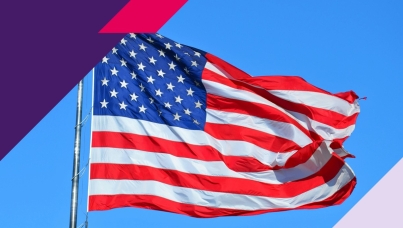The only ID that matters is Party ID
The Ipsos Consumer Tracker asks Americans questions about culture, the economy and the forces that shape our lives. Here's one thing we learned this week.
Why we asked: As the Trump administration enacts their agenda at break-neck speed, a lot is changing politically and geo-politically. To some, it feels like five years ago with a high level of uncertainty – maybe even more so. For the first years of the pandemic, Ipsos ran a segmentation called the IPAC. It asked a battery of questions to gauge how America was feeling in the moment.
So, we thought we’d pilot a modified version about our political climate.
What we found: One of the IPAC questions was about how much of a personal threat Covid posed. In the height of the pre-vaccine pandemic (July 2020) 28% of Republicans and 41% of Democrats said it posed a high threat. Now, even more Democrats (49%) say the political climate poses a high threat (just 10% of Republicans agree) than thought COVID was a high threat. That’s about where the Democrats were in November 2020, as the Delta variant was spiking to 800,000 cases a day!

We then asked a two-part question, again adapted from the IPAC, looking at how uncertain people feel because of the polices of the federal government, and how satisfied with the federal government.
Today, 12% feel stuck about what to do next. One in three have a lot of uncertainty and another 37% have some uncertainty. Only 15% say they have no uncertainty. If we bucket those into the high (stuck/a lot of uncertainty) and low (some uncertainty/no uncertainty) we are evenly split between those two.
In terms of satisfaction with the government, only 10% say they are very satisfied and about three in 10 say they are very unsatisfied. On this five-point scale, the mean is a 2.6, so just over the halfway point. That’s due to a third of people giving the government a three out of five. “Unsatisfied” outnumbers “Satisfied” by a two-to-one margin (45% to 22%).
That’s all at the surface. But dig in and you see… that basically every demographic split is the same. There’s little to no variation in our uncertainty (evenly split) or our satisfaction (we’re much more dissatisfied than satisfied) across gender, age, race, income, urban/rural, education, employment, marital status, whether we’re working remotely, whether religion is important us, or if we’re hopeful for the future. That’s a ton of really consistent crosstabs.
Then you look at party ID. Hey, look at that.

Democrats are five times as likely to feel stuck (19% to 4%) and three times as likely (56% to 19%) to have a lot of uncertainty. Republicans, not surprisingly, have the highest mean level of satisfaction (3.2) and Democrats have the lowest (1.9). But it’s worth noting that so far, even Republicans are only 41% satisfied, which is four times higher than the Democrats who are 74% DISsatisfied to Republicans’ 21%.
So on the surface, we’re pretty evenly divided, just as we saw in the polls. Beneath the surface we are, too. But when it comes to our party identification, we are moving farther and farther away from each other.
Keep an eye on this, and consider political party identification in all of your research. Party splits crop up in places you might not expect them. They don’t necessarily correlate to any other split. And anything that could potentially become political, quite likely will. See the introductions to What the Future Transportation or Food for some examples.
More insights from this wave of the Ipsos Consumer Tracker:
Are people feeling tariff price increases already?
'Buying American' remains popular, but Democratic support wavers
Most did what they told us they would when it came to watching the Super Bowl
The Ipsos Care-o-Meter: What does America know about vs. what does America care about



